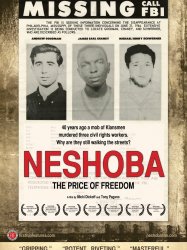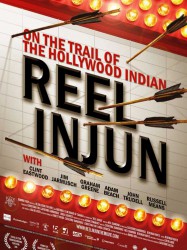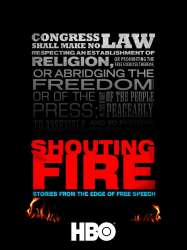Films with theme "Documentary films about racism", sorted by revenue

4Chosen: The Documentary (2008)
Directed by Jon Doscher
Origin USA
Genres Documentary
Themes Films about racism, Documentary films about racism, Documentary films about law, Documentaire sur une personnalité
Actors Al Sharpton

As We Forgive (2008)
Genres Documentary
Themes Films set in Africa, Films about racism, Documentary films about racism, Documentary films about law, Documentary films about war, Documentary films about historical events, Documentaire sur une personnalité, Documentary films about politics, Political films
The film tells the story of two Rwandan women who come face-to-face with the neighbors who slaughtered their families during the 1994 genocide, and their personal journeys toward forgiveness. Featuring in-depth interviews with both survivors and murderers, As We Forgive provides an intimate, first-hand view of the encounters between genocide perpetrators and their victims’ families.

The Conscience of Nhem En (2008)
Origin USA
Genres Documentary
Themes Films about racism, Documentary films about racism, Documentary films about law, Documentary films about war, Documentary films about historical events, Documentaire sur une personnalité

Flower in the Gun Barrel (2008)
Origin USA
Genres Documentary
Themes Films set in Africa, Films about racism, Documentary films about racism, Documentary films about law, Documentary films about war, Documentary films about historical events, Documentaire sur une personnalité, Documentary films about politics, Political films
To a large extent, the film consists of interviews with genocide survivors, many of whom were children in 1994. In all, over thirty survivors, perpetrators, and experts were interviewed for the film. In these interviews, the survivors discuss what it means to be a Rwandan and to live next door to people who killed their families. The survivors describe how they deal with their country's request that they forgive one another and move on, so that Rwanda can rebuild and unify itself. Perpetrators' views illuminate the madness that seized the culture in 1994; exploring the experience of apologizing to victims, and examining what it is like to be looked at as a murderer in Rwandan society.

Neshoba (2010)
Genres Documentary
Themes Films about racism, Documentary films about racism, Documentary films about law, Documentary films about historical events, Documentaire sur une personnalité, Documentary films about politics, Political films
Neshoba explores the history and changing racial attitudes of Neshoba County, Mississippi four decades after the murders of James Chaney, Andrew Goodman, and Michael Schwerner during Freedom Summer. The film captures the trial of Edgar Ray Killen, who granted the filmmakers "extraordinary access".

The Order of Myths (2008)
, 1h19Origin USA
Genres Documentary
Themes Films about racism, Documentary films about racism, Documentary films about law, Documentary films about historical events, Documentaire sur une personnalité, Documentary films about politics, Political films
 , 2h20
, 2h20Origin USA
Genres Documentary
Themes Films about writers, Films about slavery, Films about racism, Documentary films about racism, Documentary films about law, Documentary films about historical events, Documentaire sur une personnalité
Actors Diahann Carroll
 , 32minutes
, 32minutesOrigin USA
Genres Documentary
Themes Films about racism, Documentary films about racism, Documentary films about law, Documentary films about historical events, Documentaire sur une personnalité, Documentary films about politics, Political films

My Neighbor, My Killer (2009)
, 1h20Directed by Anne Aghion
Origin France
Genres Documentary
Themes Films set in Africa, Films about racism, Documentary films about racism, Documentary films about law, Documentary films about war, Documentary films about historical events, Documentaire sur une personnalité, Documentary films about politics, Political films

Prom Night in Mississippi (2009)
, 1h30Origin USA
Genres Documentary
Themes Films about racism, Documentary films about racism, Documentary films about law, Documentaire sur une personnalité
Actors Morgan Freeman

Reel Injun (2010)
Origin Canada
Genres Documentary, Historical, Western
Themes Films about racism, Documentary films about business, Documentary films about the film industry, Documentary films about racism, Documentary films about law, Documentaire sur une personnalité
Actors Adam Beach, Clint Eastwood, Charlie Hill, Sacheen Littlefeather, Zacharias Kunuk, Jim Jarmusch
Le réalisateur Neil Diamond, lui-même Indien Cree, donne la parole à des gens de cinéma connus pour leur regard acéré sur l'image et la place des Amérindiens dans le western américain : les cinéastes Clint Eastwood, Zacharias Kunuk et Jim Jarmusch, les acteurs Wes Studi et Graham Greene.
 , 1h14
, 1h14Directed by Liz Garbus
Origin USA
Genres Documentary
Themes Politique, Films about racism, Documentary films about racism, Documentary films about law, Documentary films about historical events, Documentaire sur une personnalité, Documentary films about politics, Political films

Soundtrack for a Revolution (2009)
, 1h22Directed by Bill Guttentag
Origin USA
Genres Documentary
Themes Films about music and musicians, Films about racism, Documentary films about racism, Documentary films about law, Documentary films about historical events, Documentary films about music and musicians, Documentaire sur une personnalité, Documentary films about politics, Musical films, Political films
Actors John Legend, Wyclef Jean, Joss Stone, Angie Stone, Harry Belafonte
L'histoire du mouvement pour les droits civiques aux États-Unis a toujours été rythmé par de la musique, des mélodies salvatrices, des chants pour la liberté. A travers les différents groupes musicaux de l'époque, "Soundtrack for a Revolution" retrace les combats des esclaves noirs de l'époque.
 , 52minutes
, 52minutesGenres Documentary
Themes Films about slavery, Films about racism, Documentary films about racism, Documentary films about law, Documentary films about war, Documentary films about historical events, Documentaire sur une personnalité, Political films, Disaster films
Frederick Douglass and the White Negro is a documentary telling the story of ex-slave, abolitionist, writer and politician Frederick Douglass and his escape to Ireland from America in the 1840s. The film follows Douglass' life from slavery as a young man through to his time in Ireland where he befriended Daniel O'Connell, toured the country spreading the message of abolition and was treated as a human being for the first time by white people. His arrival in Ireland coincided with the Great Famine and he witnessed white people in what he considered to be a worse state than his fellow African Americans back in the US. The film follows Douglass back to America where he buys his freedom with funds raised in Ireland and Britain. Fellow passengers on his return journey include the Irish escaping the famine who arrive in their millions and would go on to play a major role in the New York Draft Riot of 1863 which Douglass could only despair over. The film examines (with contributions from the author of How The Irish Became White Noel Ignatiev amongst others) the turbulent relationship between African Americans and Irish Americans during the American Civil War, what drew them together and what drove them apart and how this would shape the America of the twentieth century and beyond.

Stalags (2008)
, 1h3Origin Israel
Genres War, Documentary, Historical
Themes Films about racism, Films about religion, Films about sexuality, Films about pornography, Documentary films about business, Documentary films about the film industry, Documentary films about racism, Documentary films about law, Documentary films about war, Documentary films about historical events, Documentaire sur une personnalité, Documentary films about religion, Political films, Films about Jews and Judaism, Documentary films about World War II
Les Stalags sont des livres de poche dont les intrigues tournent autour de vigoureuses femmes officier SS qui abusent des prisonniers. Au cours des années 1960, parallèlement au procès contre le criminel de guerre nazi Adolf Eichmannl, les ventes de cette littérature pornographique ont battu tous les records en Israël et des centaines de milliers d’exemplaires ont été vendus dans les kiosques. La popularité des Stalags a faibli seulement après le procès contre leurs auteurs qui ont été accusés de distribution pornographique antisémite. Ce film traite de ce phénomène, et confirme aussi que la combinaison de pornographie et Holocauste apparaît également dans la littérature canonique sur l’Holocauste et qui continue jusqu’à présent à faire partie de la représentation de l’Holocauste en Israël.
 Connection
Connection